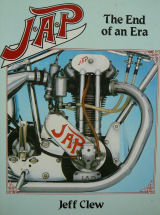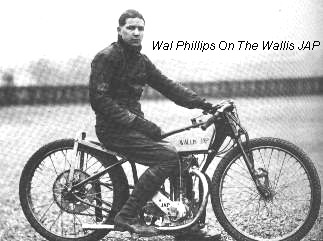


Wal Phillips, a notable rider of that period, had recently switched from his Douglas to the 4-Valve Rudge and as a regular visitor to the JAP factory, he was approached by Stan Greening with a view of stripping down the engine to see how the JAP could be improved upon. Wal agreed, and JAP was receive the breakthrough it needed.
By the time the Rudge engine had been stripped down, Stan Greening had made many useful observations that would be put to good practical use in the JAP engine. Further attention was given to port shapes and angles, without resorting to a 4-valve configuration like that of the Rudge. In addition, the Rudge cams suggested that a revision of the valve timing figures would prove advantageous. Making full use of Wal's tuning expertise, the two of them worked long hours in the Experimental Shop, mostly in a `spare time capacity, outside the factory's normal working hours. Innumerable special castings were made and tried, and because the engine was running too cool on its diet of alcohol fuel, the cylinder barrel fins were pared off even more. They became so totally absorbed that neither of them realised how much those living in nearby houses were being disturbed by late night engine testing - that is, until the complaints came rolling in.

When Wal checked the new horsepower figures with the foreman of the Test Shop, they looked good enough to him, so he agreed to try the engine at Stamford Bridge on the following Saturday. Somehow, George Wallis got to hear of the plan and he implored Wal to use one of his frames. At this time George had acquired something of a reputation as a builder of special frames for use on the speedway and he had enjoyed a moderate run of success. He was so insistent that Wal agreed to give his frame a trial, the result being that the machine was completed only an hour before the meeting started, in true racing tradition. A two lap trial had been arranged, before the first race of the evening. The track was in perfect condition and after a warm-up had shown the  engine was running well, Wal put in a couple of fast laps. When he returned to the pits, the JAP folk were full of excitement, some unofficial timing having shown that he was lapping at over 46 mph, which was more than the track record.
engine was running well, Wal put in a couple of fast laps. When he returned to the pits, the JAP folk were full of excitement, some unofficial timing having shown that he was lapping at over 46 mph, which was more than the track record.
There were notable problems with the frame on the prototype, but these were soon rectified after tests in a Rudge frame, the end product offering better handling than the Rudge itself.